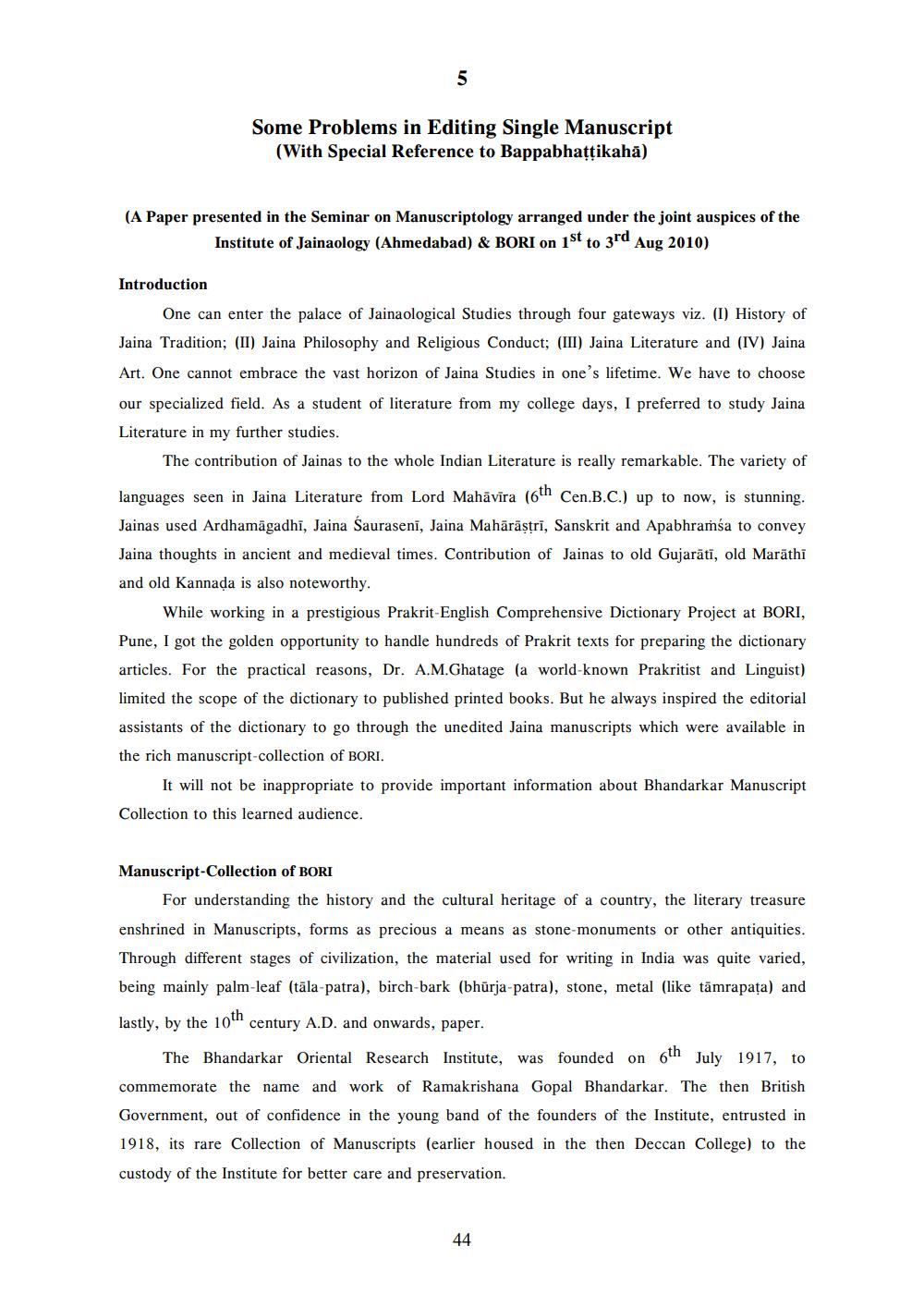________________
Some Problems in Editing Single Manuscript
(With Special Reference to Bappabhattikahā)
(A Paper presented in the Seminar on Manuscriptology arranged under the joint auspices of the
Institute of Jainaology (Ahmedabad) & BORI on 1st to 3rd Aug 2010)
Introduction
One can enter the palace of Jainaological Studies through four gateways viz. (1) History of Jaina Tradition; (II) Jaina Philosophy and Religious Conduct; (III) Jaina Literature and (IV) Jaina Art. One cannot embrace the vast horizon of Jaina Studies in one's lifetime. We have to choose our specialized field. As a student of literature from my college days, I preferred to study Jaina Literature in my further studies.
The contribution of Jainas to the whole Indian Literature is really remarkable. The variety of
languages seen in Jaina Literature from Lord Mahāvīra (6th Cen.B.C.) up to now, is stunning. Jainas used Ardhamāgadhi, Jaina Sauraseni, Jaina Mahārāstri, Sanskrit and Apabhramsa to convey Jaina thoughts in ancient and medieval times. Contribution of Jainas to old Gujarāti, old Marāthi and old Kannada is also noteworthy.
While working in a prestigious Prakrit-English Comprehensive Dictionary Project at BORI, Pune, I got the golden opportunity to handle hundreds of Prakrit texts for preparing the dictionary articles. For the practical reasons, Dr. A.M.Ghatage (a world-known Prakritist and Linguist) limited the scope of the dictionary to published printed books. But he always inspired the editorial assistants of the dictionary to go through the unedited Jaina manuscripts which were available in the rich manuscript-collection of BORI.
It will not be inappropriate to provide important information about Bhandarkar Manuscript Collection to this learned audience.
Manuscript-Collection of BORI
For understanding the history and the cultural heritage of a country, the literary treasure enshrined in Manuscripts, forms as precious a means as stone-monuments or other antiquities. Through different stages of civilization, the material used for writing in India was quite varied, being mainly palm-leaf (tāla-patra), birch-bark (bhūrja-patra), stone, metal (like tāmrapata) and
lastly, by the 10" century A.D. and onwards, paper.
The Bhandarkar Oriental Research Institute, was founded on 6th July 1917, to commemorate the name and work of Ramakrishana Gopal Bhandarkar. The then British Government, out of confidence in the young band of the founders of the Institute, entrusted in 1918, its rare Collection of Manuscripts (earlier housed in the then Deccan College) to the custody of the Institute for better care and preservation.
44




